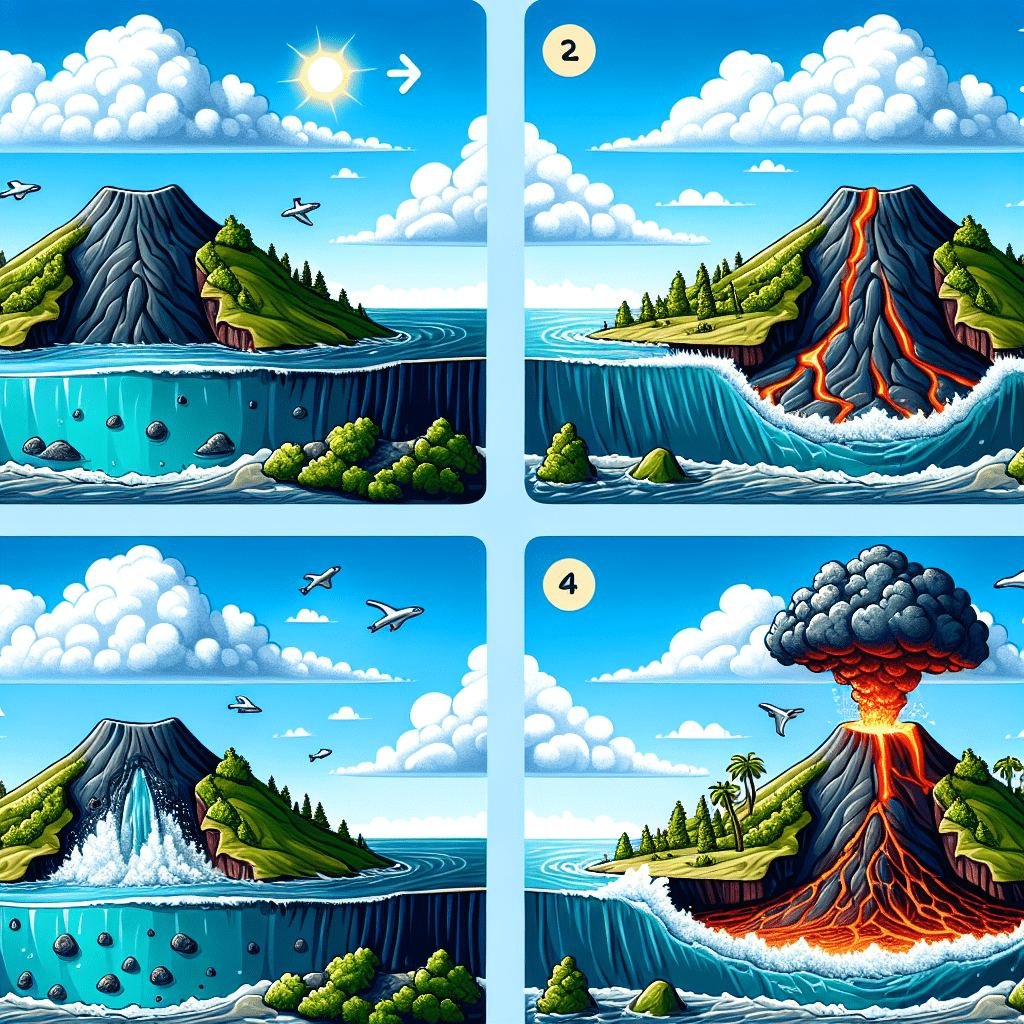Imagine standing on a beach, the warm sand beneath your feet, the sound of waves crashing against the shore. But what if I told you that beneath that tranquil surface lies a hidden force of nature, capable of creating entire islands? This is the captivating world of volcanic islands. Volcanoes, formed by the eruption of molten rock and gases, have the power to transform landscapes and shape our planet. In this article, we will explore the mesmerizing process behind the formation of volcanic islands and uncover the secrets that lie beneath these natural wonders. So, grab your virtual explorer’s hat and get ready to embark on a journey into the world of volcanoes.
Understanding Volcanoes
Defining a volcano
A volcano is a geological feature that is formed when molten rock, gases, and debris, collectively known as magma, rise to the Earth’s surface. This process is often accompanied by explosive eruptions, during which lava and ash are expelled into the atmosphere. Volcanoes can be found at various locations around the world, including plate boundaries, hotspots, and rift zones. They come in different shapes and sizes, and their formations are influenced by several factors such as the composition of the magma and the surrounding geological environment.
How a volcano functions
The functioning of a volcano is a complex process that involves the movement of magma from the Earth’s mantle to the surface. It begins with the accumulation of magma beneath the Earth’s crust, forming a magma chamber. As the pressure inside the chamber increases, the magma seeks a path of least resistance and starts to rise towards the surface through a conduit. This upward movement creates fractures in the Earth’s crust, which can lead to the formation of vents or craters. Finally, when the magma reaches the surface, it is released as lava or explosive eruptions, depending on various factors such as gas content, magma viscosity, and tectonic activity.
Types of volcanoes
Volcanoes can be classified into several types based on their physical characteristics and eruption patterns. One common type is the stratovolcano, also known as a composite volcano, which is characterized by its steep, conical shape and explosive eruptions. Shield volcanoes, on the other hand, have a broad, gently sloping profile and are formed by the accumulation of fluid lava flows. Another type is the cinder cone volcano, which is typically smaller in size and formed by the eruption of gas-rich, pyroclastic material. Each type of volcano offers unique insights into the geological processes occurring beneath the Earth’s surface.
Volcanic activity patterns
Volcanic activity is not a constant phenomenon and can display various patterns over time. Some volcanoes may be dormant for long periods, with no recent eruptions, while others may be actively erupting. The frequency and intensity of eruptions can also vary, ranging from mild, effusive eruptions to violent, explosive ones. Understanding these activity patterns is crucial for assessing the potential hazards posed by volcanoes and predicting future eruptions. Scientists use a combination of monitoring techniques, such as seismic activity measurements and gas emissions analysis, to track changes and anomalies in volcanic behavior.
Formation of Volcanic Islands
Understanding the basics of island formation
Islands are landmasses that are surrounded by water, and they can be formed in different ways. One of the primary mechanisms for island formation is through volcanic activity. Volcanic islands are created when magma rises to the Earth’s surface, leading to the accumulation of lava and other volcanic materials. Over time, these materials build up to form land masses that emerge from the surrounding ocean or sea. Volcanic islands often have distinct geological features, such as rugged terrains, steep cliffs, and fertile soils, which contribute to their unique ecosystems.
The role of volcanic activity in forming islands
Volcanic activity plays a crucial role in the formation of islands. When magma reaches the surface, it cools and solidifies, forming solid rocks and structures. Over time, repeated eruptions and the deposition of lava layers lead to the growth and expansion of the landmass. Volcanic islands can also experience underwater volcanic activity, where eruptions occur on the ocean floor and gradually build up to form islands. This process is known as seamount volcanism and is responsible for the creation of many submarine volcanoes that eventually become islands as they breach the water’s surface.

